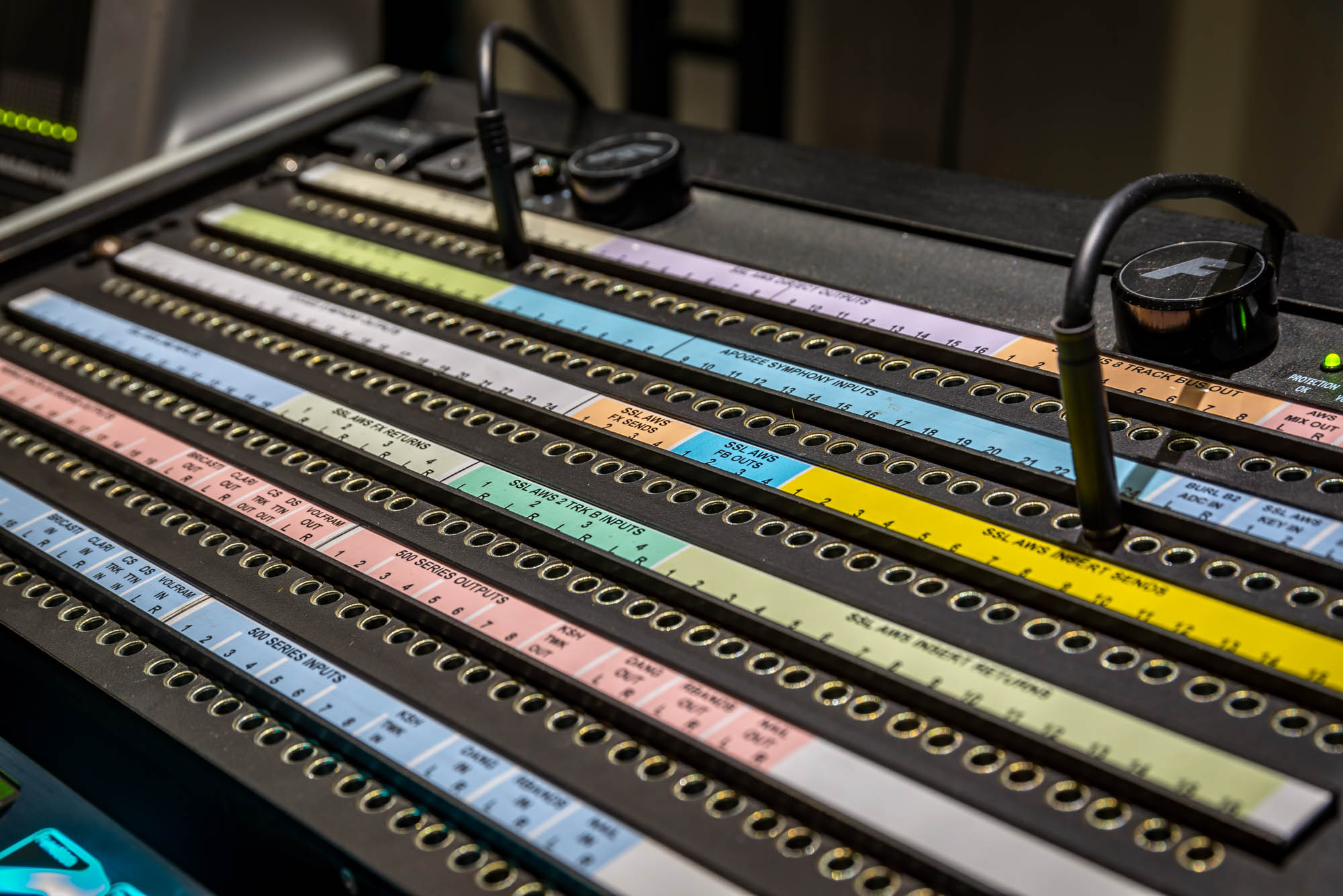Blog 2 | What is a Patchbay and why do you need one?May 15, 2023 - Posted by Mash Maximus Patchbays might look intimidating at first, but they are actually quite simple and way less terrifying once understood.All things considered, patchbays are the main hub of any studio and they make your studio life a piece of cake. Audio patchbays are essentially modern switchboards (see photo below), centralized hubs that control the inputs and outputs of sound signals for audio recording, mixing, and production. Their numerous jacks allow users to seamlessly connect audio devices together by routing gear from one to the next with patch cables or in some cases, via software.
What even Is a Patchbay?
A patchbay is comparable to the central nervous system of the human body, a patchbay communicates between devices as it serves as the interpreter of the external environment, aka human input and signal routing requirements. Multiple devices are plugged directly into the external input and output jacks to create a number of routing combinations. Because of patchbays, your workflow in a studio can be universally streamlined. Since audio connections are easily routed and re-routed from a singular, accessible location, the studio in itself becomes ergonomic. Basically, the message we’re trying to get across is that patchbays are more than simply user-friendly at the surface-level. Audio patchbays are remarkably handy on a deeper level too.
Standard patchbays are divided numerically into columns, each with a vertical pair of jacks. The top set of jacks are for outputs and the bottom set of jacks are for inputs (this is not a strict rule but it makes following signal paths logical and simple). Each column of jacks contains one patch point. As mentioned above, these patch points consist of an external output from one device and an external input to another. The fundamental rule is that connections flow in a cascading fashion from top to bottom. Any studio can be starkly different from another. How an individual chooses to connect their devices depends on their workflow and creative process. Using a patchbay, you can quickly experiment with diverse sounds based on your chosen configuration, which is also called an operation mode (more on this later). Patchbays let users effortlessly change up the structure of their studio connections—or restore standard operations by changing the basic settings back if desired. There’s no set “right” or “wrong” arrangement, but a mode of usage should methodically make sense. Keep in mind that when setting up a patchbay, the user must consider their studio layout, their recording goals and needs, the type of instruments typically recorded, and the approximate number of audio inputs and outputs. Let’s take a closer look at one of the most useful and beneficial functions of any audio patchbay, operation modes.
The Traditional: Full-Normal ConfigurationThis is the most-used signal routing configuration. Fully Normalled means the internal connection inside the patchbay connects the top row of output jacks to the bottom row of input jacks. Ergo, each output flows directly below to the corresponding input by default. That flow is only broken when a patch cable is inserted into the top jack.
The Halved: Half-Normal ConfigurationA “half-normal” connection is just as it sounds: half n’ half. This is not something to be poured into your morning cup of coffee to balance the taste, but a mode that splits sound signals to send them to two different outputs. This configuration allows users to break the normal to utilize more advanced mixing techniques. Eg. A microphone signal that is flowing from its position on the top row to a corresponding Mic-preamp input in the bottom row can be split or “copied” to another mic-preamp input if you wanted to capture the same source but get two different voicings.The Neutralized: Non-Normal Configuration
Patch points are also changeable to a “non-normal” setting. In this specific mode, no direct signal flows from the top jacks to the bottom jacks by default. This means the top and bottom rows of the patchbay are unrelated. Patch cables must be used for routing signals. Most notably, this configuration is utilized to avoid feedback looping or to facilitate effect processing.
Once you learn the basics of audio patchbays: what they are and why you need them, you can easily integrate one into your studio setup. Secondly, you can cut your time tinkering with messy, tangled cables. You don’t have to crawl on the ground or behind your rack ever again. Thirdly, with the prevalence of expansive home studios, with everything from guitar focused tracking setups to Youtube audio enthusiasts to dynamic immersive audio rooms running ATMOS, you are extremely likely to benefit from the addition of a patchbay. Patchbays offer you the unrivaled opportunity to design your studio’s layout exactly how you want it to be—all you need to do is connect your equipment to maximize your creative flow. Patchbays come with a variety of connector configurations but the most common ones are DB25 to TT. Some of the brands of patchbays that we carry are Audio Accessories, Bittree, Flock, Redco, Switchcraft. To get all your equipment hooked up to a patchbay or multiple bays, we recommend getting some custom DB25 snakes made by our in-house cable shop in Glendale, California. Our team of gearheads would be happy to guide you through the workings of patchbays as well as give you proper rundowns of the different brands we offer. |

